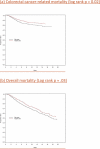Aspirin, salicylates and cancer: report of a meeting at the Royal Society of Medicine, London, 23 November 2010
- PMID: 22276056
- PMCID: PMC3223940
- DOI: 10.3332/ecancer.2011.213
Aspirin, salicylates and cancer: report of a meeting at the Royal Society of Medicine, London, 23 November 2010
Figures
























Similar articles
-
Aspirin for the older person: report of a meeting at the Royal Society of Medicine, London, 3rd November 2011.Ecancermedicalscience. 2012;6:245. doi: 10.3332/ecancer.2012.245. Epub 2012 Feb 28. Ecancermedicalscience. 2012. PMID: 22423252 Free PMC article.
-
[Milestones of cardivascular pharmacotherapy: salicylates and aspirin].Cas Lek Cesk. 2006;145(12):901-4. Cas Lek Cesk. 2006. PMID: 17323609 Czech.
-
187th meeting of the Society for Endocrinology with the Endocrine Section of the Royal Society of Medicine. London, 26-28 November 1996.J Endocrinol. 1996 Nov;151 Suppl:S1-22, O1-32, P1-108. J Endocrinol. 1996. PMID: 8965062 No abstract available.
-
Research Day of the Royal Brompton and Harefield Hospitals, Royal Society of Medicine, London.Eur Heart J. 2020 Jan 21;41(4):494-497. doi: 10.1093/eurheartj/ehaa015. Eur Heart J. 2020. PMID: 31960934 Review. No abstract available.
-
Clinical pharmacokinetics of the salicylates.Clin Pharmacokinet. 1985 Mar-Apr;10(2):164-77. doi: 10.2165/00003088-198510020-00004. Clin Pharmacokinet. 1985. PMID: 3888490 Review.
References
-
- Kune GA, Kune S, Watson LF. Colorectal cancer risk, chronic illnesses, operations, and medications: case control results from the Melbourne Colorectal Cancer Study. Cancer Res. 1988;48:4399–404. - PubMed
-
- Vainio H, Morgan G, Kleihues P. An international evaluation of the cancer-preventive potential of nonsteroidal anti-inflammatory drugs. Cancer Epidemiol Biomarkers Prev. 1997;6:749–53. - PubMed
-
- Morgan G, Vainio H. NSAIDs and cancer prevention: a review of the recent evidence. Curr Topics Pharmacol. 2002;6:25–39.
LinkOut - more resources
Full Text Sources
